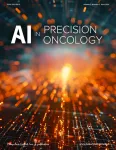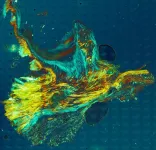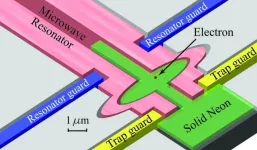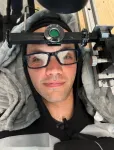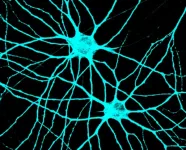(Press-News.org) Disability studies has gained prominence in recent years, transforming fields ranging from design to literary studies with insurgent approaches to access and representation. The newest volume of Osiris, “Disability and the History of Science,” extends this movement to ask how disability has been a central, if unacknowledged, force in the scientific disciplines and the history of science. The volume examines the many roles that disability and disabled people have played throughout the history of science, calling attention to the shaping of scientific knowledge production by disability.
Editors Jaipreet Virdi, Mara Mills, and Sarah F. Rose, in their introduction to the volume, distinguish “disability history of science” from conventional “histories of disability,” in which disabled people are treated as passive objects of inquiry. The disability histories in this volume, by contrast, examine the contributions of disabled people to the sciences, highlighting the work of ME/CFS (chronic fatigue) activists, “supercrip” laboratory scientists, and people using assistive technologies. Other articles address historical definitions of disability through subjects such as blindness in ancient Mesopotamia, smallpox vaccination campaigns in Meiji Japan, and the phrenological attribution of pathology to Indigenous remains.
Many of these chapters discuss the formation of disability within structures of empire and capitalism, which necessitated new methods of “sorting and managing workers’ bodies.” The British Empire, for instance, applied the category of “infirmity” to people at the margins of its economy, and used racialized claims of disability to re-define “health” for African soldiers to justify extracting their labor. For British miners, disability was a crucial issue for receiving compensation for breathing issues caused by their labor, and, conversely, for industrial supervisors seeking to eliminate disabled employees from their enterprises.
The volume also investigates the relationship between disability and medical epidemics. The editors write that Osiris 39, assembled under the conditions of the COVID-19 pandemic, illustrates “the urgency of disability studies as an expert discourse in our personal lives, work environments, and social worlds.” It is a project produced through disability and the work of disabled scholars, arguing for a new commitment to disability epistemology in the history of science.
Founded in 1936 by George Sarton, and relaunched by the History of Science Society in 1985, Osiris is an annual thematic journal that highlights research on significant themes in the history of science.
Founded in 1924, the History of Science Society is the world’s largest society dedicated to understanding science, technology, medicine, and their interactions with society in historical context.
END
Osiris 39 examines the role of disability in the history of science
2024-06-26
ELSE PRESS RELEASES FROM THIS DATE:
AI-based Alphafold: Its potential impact on predictive medicine
2024-06-26
AlphaFold is an outstanding example of artificial intelligence’s computational capabilities in accurately predicting intricate protein structures. A new Review article explores AlphaFold’s recent advancements and its potential impact on predictive medicine. The article is published in the peer-reviewed journal AI in Precision Oncology. Click to read the articles now.
Vivek Subbiah, MD, from the Sarah Cannon Research Institute, and coauthors, describe a shift toward predictive medicine, in which AI, integrated with genomic data, ...
A heart of stone: Study defines the process of and defenses against cardiac valve calcification
2024-06-26
CHAMPAIGN, Ill. — The human body has sophisticated defenses against the deposition of calcium minerals that stiffen heart tissues, researchers at the University of Illinois Urbana-Champaign and collaborators at UCLA Health and the University of Texas at Austin found in a new study that provides the first detailed, step-by-step documentation of how calcification progresses.
“Heart disease is the leading killer annually — about 18 million deaths per year — and that number is growing. A large proportion is the result of calcification,” said study leader Bruce Fouke, a U. of I. professor of earth ...
Understanding quantum states: New FAMU-FSU research shows importance of precise topography in solid neon qubits
2024-06-26
Quantum computers have the potential to be revolutionary tools for their ability to perform calculations that would take classical computers many years to resolve.
But to make an effective quantum computer, you need a reliable quantum bit, or qubit, that can exist in a simultaneous 0 or 1 state for a sufficiently long period, known as its coherence time.
One promising approach is trapping a single electron on a solid neon surface, called an electron-on-solid-neon qubit. A study led by FAMU-FSU College of Engineering Professor Wei Guo that was ...
Review of pathogenesis, research and treatment of amyloidosis published in New England Journal of Medicine
2024-06-26
(Boston) — AL (immunoglobulin light chain) amyloidosis is a rare disease that often results in progressive organ dysfunction, organ failure and eventual death.
Clonal plasma cells in the bone marrow secrete free light chains into circulation. These light chains are part of immunoglobulins, also called antibodies. But in this disease, light chains misfold and aggregate into amyloid fibrils that deposit in organs and tissues.
In a review article of AL amyloidosis “Systemic Light Chain Amyloidosis,” Vaishali Sanchorawala, MD, director of the Amyloidosis Center at the Chobanian & ...
New research tools reveal the dynamics behind breaking a sweat
2024-06-26
Excessive heat across the United States is making this summer a season of sweat. Perspiration and its evaporation are crucial to keeping us cool when things get hot. But our understanding of how sweat evaporates is limited to the profuse phases of the process, when our bodies are coated in a sticky film or even pools of perspiration. Relatively is little is known about the dynamics behind initial phases of sweating, when tiny droplets are emitted by individual sweat glands and then quickly evaporate.
“There are mechanical engineering researchers around the world, myself included, who are devoted to understanding the different parameters of droplet behavior on ...
Neuroscience research leverages stem cells to understand how neurons connect and communicate in the brain
2024-06-26
Newly published research from Colorado State University answers fundamental questions about cellular connectivity in the brain that could be useful in the development of treatments for neurological diseases like autism, epilepsy or schizophrenia.
The work, highlighted in the Proceedings of the National Academy of Sciences, focuses on how neurons in the brain transmit information between each other through highly specialized subcellular structures called synapses. These delicate structures are key to controlling many processes across the nervous system via electrochemical ...
NRL CCOR launches on the GOES-U NOAA satellite to monitor space weather
2024-06-26
WASHINGTON – The U.S. Naval Research Laboratory’s (NRL) Compact Coronagraph (CCOR) was launched June 25, on the National Oceanic and Atmospheric Administration (NOAA) Geostationary Operational Environmental Satellite-U (GOES-U) from NASA – Kennedy Space Center to detect and characterize coronal mass ejections (CMEs).
The NOAA sponsored NRL to design, integrate, and test CCOR, a small space telescope that will create an artificial eclipse of the sun and ...
Study shows how liver damage from stress and aging might be reversible
2024-06-26
DURHAM, N.C. – While the liver is one of the body’s most resilient organs, it is still vulnerable to the ravages of stress and aging, leading to disease, severe scarring and failure. A Duke Health research team now might have found a way to turn back time and restore the liver.
In experiments using mice and liver tissue from humans, the researchers identified how the aging process prompts certain liver cells to die off. They were then able to reverse the process in the animals with an investigational drug.
The finding, which ...
Bone stem cells with IFITM5 mutation get caught in a loop leading to osteogenesis imperfecta type V
2024-06-26
A study conducted by researchers at Baylor College of Medicine and collaborating institutions reveals the molecular events leading to osteogenesis imperfecta type V, a form of brittle bone disease caused by a mutation in the gene IFITM5.
The mutation blocks the normal development of bone stem cells into mature cells, which would form healthy bones. Instead, the mutation leads to the formation of bones that are extremely brittle. Children with this disorder have recurrent fractures, bone deformities, chronic pain and other complications. ...
Tai Chi reduces risk of inflammatory disease, treats insomnia among breast cancer survivors
2024-06-26
New research led by UCLA Health confirms that both Tai Chi and cognitive behavioral therapy can reduce insomnia in breast cancer survivors but also may provide additional health benefits by reducing inflammation and bolstering anti-viral defenses.
Chronic insomnia is one of the most prominent symptoms experienced among cancer survivors and poses significant health concerns, including the risk of inflammatory disease that could increase the risk of cancer recurrence.
About 30% of breast cancer survivors are reported to have insomnia, which is twice the rate of the general population. While previous research has shown cognitive behavioral therapy and mind-body ...
